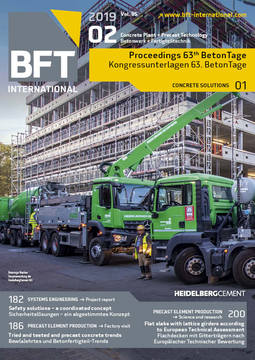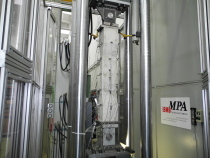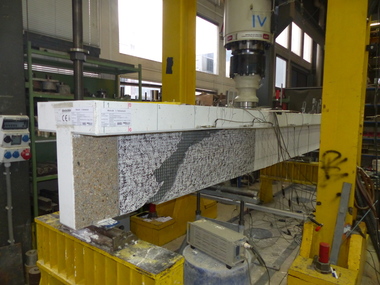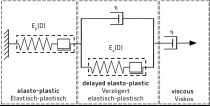Large-scale tests on precast carbon-reinforced
concrete beams
With the innovative composite material carbon-reinforced concrete, thin-walled, high-performance components can be realized. Applicable design concepts and engineering rules are necessary to accurately predict their structural and deformation behavior. As part of the C3-V1.2 collaborative research project, verification models and structural design rules for new components were developed at the Institute of Structural Concrete at RWTH Aachen University. At the end of the project, the applicability of the models was to be tested on a real scale. For this purpose, three profiled precast carbon-reinforced concrete beams were designed and produced in collaboration with Hentschke Bau GmbH and loaded to failure in large-scale tests carried out in Aachen. A realistic line load was applied in an elaborate test rig by means of an upside-down test. The 8 m long beams were very slender, with a height of 90 cm and an upper and lower-chord width of 20 cm and a web width of 5 cm. Carbon bars of 8.5 mm in diameter were used as flexural reinforcement, whereas grids consisting of expoxy-impregnated carbon rovings were used as shear reinforcement. Subsidiary reinforcement consisted of expoxy-impregnated carbon and glass grids. A self-compacting high-performance concrete with a maximum aggregate size of 5 mm was adjusted specifically for the slender component shape.
The tests were specifically designed for bending tensile failure of the longitudinal reinforcement or bending compressive failure of the concrete. Test results showed that existing flexural models predicted the behavior of structural components with mixed reinforcement very accurately. Various calculation methods are available for accurately determining both their maximum load-bearing capacity and deflection in the serviceability limit state. In future, however, a rethink is called for with regard to the ductility and robustness of carbon-reinforced concrete components. In this respect, pronounced cracking as well as the large ultimate strain and deflection compensate for the lacking yield capacity of the reinforcement.








